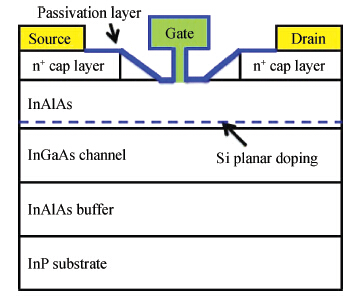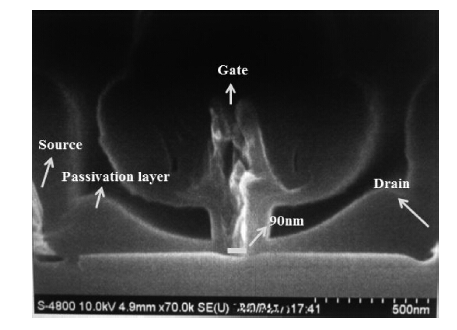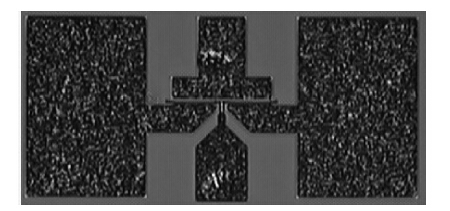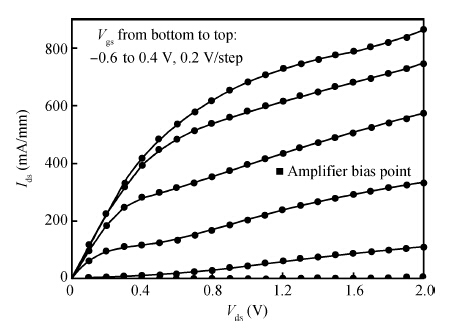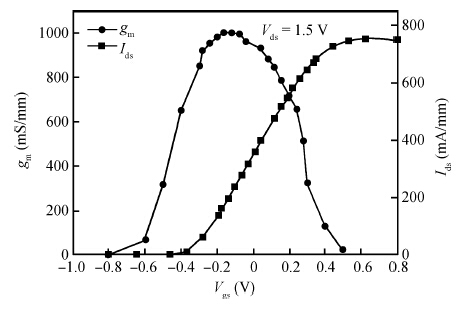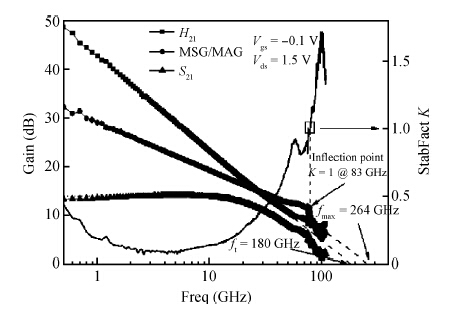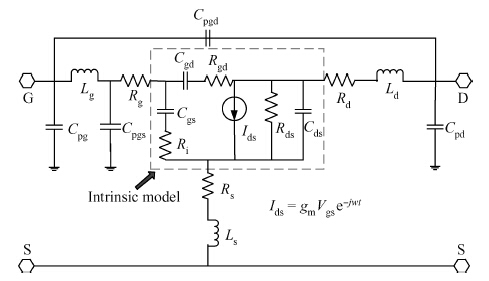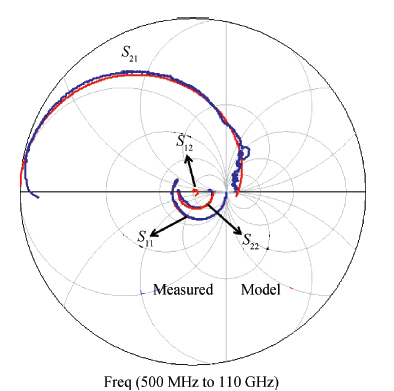| Citation: |
Zhiming Wang, Xin Lü, Xiaobin Luo, Yuxing Cui, Xiguo Sun, Jianghui Mo, Xingchang Fu, Liang Li, Dawei He. Design of InAlAs/InGaAs PHEMTs and small-signal modeling from 0.5 to 110 GHz[J]. Journal of Semiconductors, 2015, 36(2): 024005. doi: 10.1088/1674-4926/36/2/024005
****
Z M Wang, X Lü, X B Luo, Y X Cui, X G Sun, J H Mo, X C Fu, L Li, D W He. Design of InAlAs/InGaAs PHEMTs and small-signal modeling from 0.5 to 110 GHz[J]. J. Semicond., 2015, 36(2): 024005. doi: 10.1088/1674-4926/36/2/024005.
|
Design of InAlAs/InGaAs PHEMTs and small-signal modeling from 0.5 to 110 GHz
DOI: 10.1088/1674-4926/36/2/024005
More Information
-
Abstract
90-nm T-shaped gate InP-based In0.52Al0.48As/In0.6Ga0.4As pseudomorphic high electron mobility transistors were designed and fabricated with a gate-width of 2 × 30 μm, a source—drain space of 2.5 μm, and a source—gate space of 0.75 μm. DC, RF and small-signal model characterizations were demonstrated. The maximum saturation current density was measured to be 755 mA/mm biased at Vgs = 0.6 V and Vds = 1.5 V. The maximum extrinsic transconductance was measured to be 1006 mS/mm biased at Vgs = -0.1 V and Vds = 1.5 V. The extrapolated current gain cutoff frequency and maximum oscillation frequency based on S-parameters measured from 0.5 to 110 GHz were 180 and 264 GHz, respectively. The inflection point (the stability factor k= 1) where the slope from —10 dB/decade (MSG) to —20 dB/decade (MAG) was measured to be 83 GHz. The small-signal model of this device was also established, and the S-parameters of the model are consistent with those measured from 0.5—110 GHz.-
Keywords:
- InP,
- PHEMTs,
- InAlAs/InGaAs,
- MMICs,
- small-signal modeling
-
References
[1] [2] [3] [4] [5] [6] [7] [8] [9] [10] [11] [12] [13] [14] [15] -
Proportional views





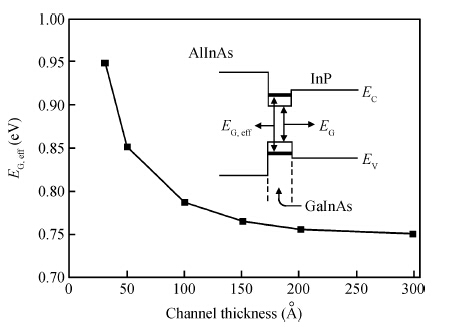
 DownLoad:
DownLoad:
